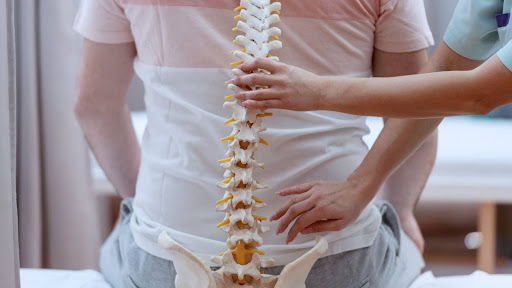Most patients disregard the early signs of back issues until then despite the need for spinal support in overall well-being. Providing an anticipatory, non-surgical means of prevention and healing of spinal ailments, physiotherapy enables patients to forego long-term pain and limited mobility. Specialised physio therapies can help alleviate pain and correct root issues instead of just symptoms, from slipped discs to posture issues.
Referring to a physiotherapist Ashford Kent offers residents of the area individualised spinal support programs. The following is an explanation of eight strong arguments for incorporating physiotherapy into your spinal support plan, given its worth in long-term musculoskeletal functioning, injury rehabilitation, and pain alleviation.
Contents
Restores Postural Imbalance:
Sedentary conditions of sitting for extended periods initiate muscular imbalances that stress the spinal support system. Physiotherapists assess postural alignment through manual palpation and motion analysis. They claim to design some exercises to strengthen weak core muscles and soothe tension in overactive ones. Treatment may involve pelvic alignment, scapular stabilisation and thoracic mobility techniques.
Postural correction teaches patients ergonomic changes for daily use, along with work station modification. This reduces uneven disc pressure responsible for premature degeneration. It has been reported to have a 48% reduction in recurring back pain episodes from consistent postural physiotherapy. Small spinal support realignments also reduce joint and neural inflammation in the long term.
Releases Nerve Compression:
Recurring pinching of nerves, bulging discs or stenosis of the spine usually cause radiating pain, numbness, or weakness. For decompression of nerve root pressure, physiotherapists employ traction techniques to provide intervertebral space. Neural mobilisation exercises gradually mobilise nerves in the surrounding tissues locally for more movement.
Early treatment prevents chronic sensitisation of the nerves, which is harder to treat; treatment regimens can comprise manual treatment with allied directional preference exercises like the McKenzie technique. Modalities such as interferential therapy minimise inflammation of the nerve. Decompression movements are exercised by patients, and they prevent postures that worsen the symptoms. Research demonstrates that physiotherapy is on par with spinal support injections in nerve-related pain, without invasive risk.
Strengthens Core Stability:
Spinal support comes from the deep core muscles, transversus abdominis, and multifidus, a natural corset. Overactivity here leads to surface muscle overuse and therefore, strain. Frequently irretrievable once injured, physiotherapists re-educating normal patterns of core activation begin with shallow abdominal hollowing and progress to functional movement.
With Pilates-based management, neuromuscular control for spinal support protection during everyday activities is enhanced; stabilisation programmes reduce repeated disc herniation risk by 60%. The patients are taught to activate the core before lifting or twisting manoeuvres. Strong core muscles transfer spinal loads uniformly, without excessively loading any one segment.
Increases Spinal Flexibility:
Increased stiffness with increasing age and surgically/damaged scar tissue restricts spinal flexibility. Physiotherapists prescribe some mobility exercises in each region of the spine: cervical, thoracic, and lumbar. Cat Cow stretches, rotation mobilisations, or foam roller exercises could be some of the examples. Manual therapy disrupts adhesions in joint capsules and soft tissues.
Hydrotherapy stretches using gravity in warm water. Increased flexibility stops overstraining of other parts through compensation movements. Research indicates that thoracic spine mobility lowered lower back pain by 35%. Mobility work regularly also enhances nutritional diffusion to spinal discs without a direct blood supply.
Facilitates Post-Op Recovery:
Physiotherapists construct phase programmes from early gentle nerve glides and mobilisation of scar. Physiotherapists test over the areas of the wound and progressively reinstate movement patterns. Progressive core reactivation prevents muscular atrophy during the healing phase.
Gait reeducation erases compensatory limp patterns. Physio-led rehabilitation has been demonstrated to minimise post-op hospital stays by 28%. Methods of safe mobility are learned by patients to prevent reinjury during the weakened stage of healing. Ongoing physiotherapy allows recovery from surgery to complete restoration of function.
Conclusion – Spinal Support:
Physiotherapy provides essential evidence-based treatment of spinal support from teenage postural care to management of degeneration with increasing age in all stages of life. Residents requiring expert therapy need to consult a physiotherapist for individual assessment and treatment planning. Integrating manual therapy, chosen exercises, and education, physiotherapy addresses symptoms as well as causality.
Unlike symptomatic mitigation like ibuprofen, physical therapy empowers patients with resilient mental health and self-management skills. Spinal support physiotherapy investment increases quality of life through maintenance of independence well into older years, resolution of existing back issues, and prevention of future back issues through improved body mechanics and strength.
